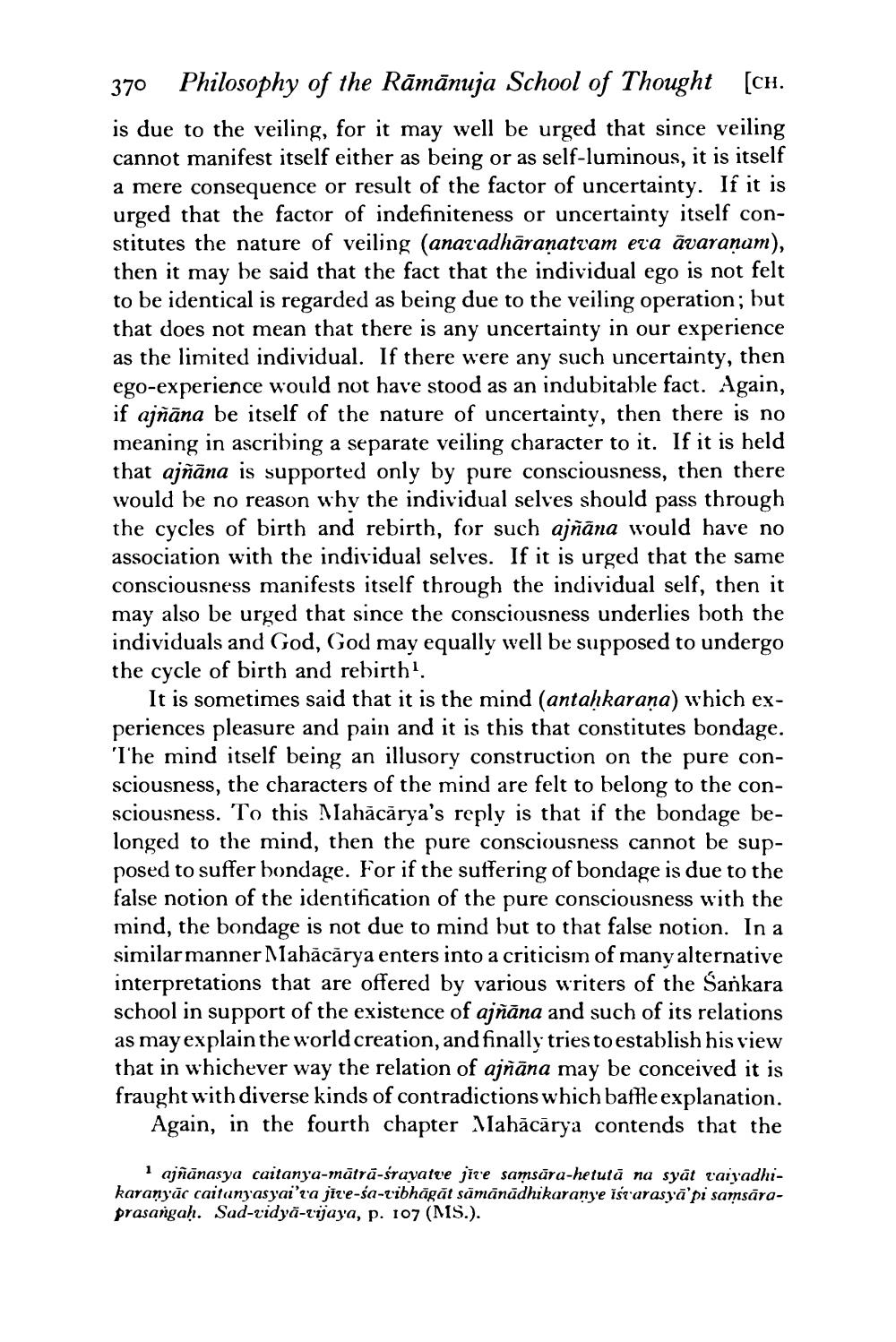________________
370 Philosophy of the Rāmānuja School of Thought [ch. is due to the veiling, for it may well be urged that since veiling cannot manifest itself either as being or as self-luminous, it is itself a mere consequence or result of the factor of uncertainty. If it is urged that the factor of indefiniteness or uncertainty itself constitutes the nature of veiling (anatadhāraṇatvam eta āvaraṇam), then it may be said that the fact that the individual ego is not felt to be identical is regarded as being due to the veiling operation; but that does not mean that there is any uncertainty in our experience as the limited individual. If there were any such uncertainty, then ego-experience would not have stood as an indubitable fact. Again, if ajñāna be itself of the nature of uncertainty, then there is no meaning in ascribing a separate veiling character to it. If it is held that ajñāna is supported only by pure consciousness, then there would be no reason why the individual selves should pass through the cycles of birth and rebirth, for such ajñāna would have no association with the individual selves. If it is urged that the same consciousness manifests itself through the individual self, then it may also be urged that since the consciousness underlies both the individuals and God, God may equally well be supposed to undergo the cycle of birth and rebirth.
It is sometimes said that it is the mind (antahkarana) which experiences pleasure and pain and it is this that constitutes bondage. l'he mind itself being an illusory construction on the pure consciousness, the characters of the mind are felt to belong to the consciousness. To this Alahācārya's reply is that if the bondage belonged to the mind, then the pure consciousness cannot be supposed to suffer bondage. For if the suffering of bondage is due to the false notion of the identification of the pure consciousness with the mind, the bondage is not due to mind but to that false notion. In a similar manner Mahācārya enters into a criticism of many alternative interpretations that are offered by various writers of the Sankara school in support of the existence of ajñāna and such of its relations as may explain the world creation, and finally tries to establish his view that in whichever way the relation of ajñāna may be conceived it is fraught with diverse kinds of contradictions which baffle explanation.
Again, in the fourth chapter Vahācārya contends that the
1 ajñānasya caitanya-mātrā-srayatte jite samsāra-hetutā na syāt taiyadhikaranyāc caitanyasyai'ra jīte-sa-tibhägāt sämānādhikaranje istarasyā pi samsāraprasangah. Sad-vidyā-vijaya, p. 107 (MS.).




